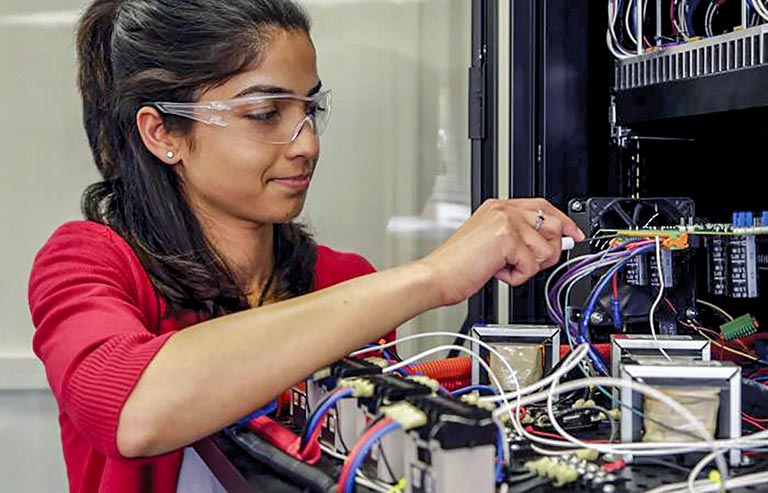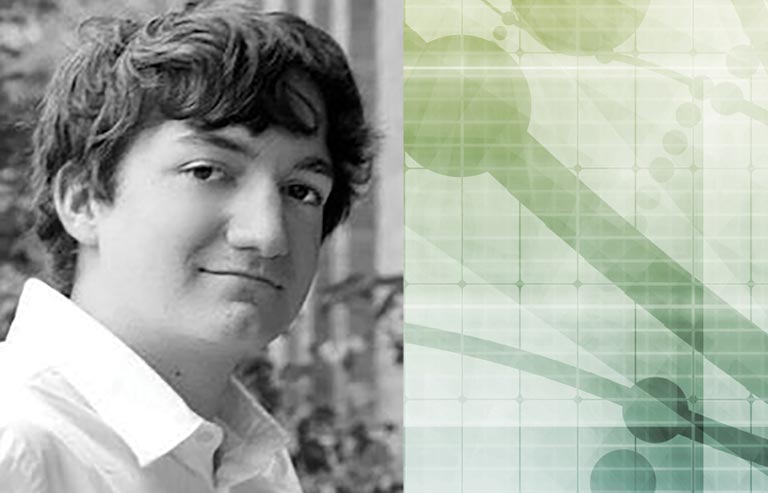In Their Words: Students Describe the Bredesen Center Experience
As yet another joint venture between UT and Oak Ridge National Laboratory, the Bredesen Center for Interdisciplinary Research and Graduate Education serves as one of the primary routes through which UT graduate students interact with the national lab.
The center, directed by UT-ORNL Governor’s Chair for Advanced Manufacturing Suresh Babu, currently has 100 students pursuing its Energy Science and Engineering (ESE) program and another 21 in the newer but growing Data Science and Engineering (DSE) program, with 69 graduates from ESE to date.
Here are reflections from two current students, in their own words.

Ishita Ray
ESE Doctoral Candidate
Faculty supervisor: Min H. Kao Professor Leon Tolbert
Research: Distributed Energy and Grid Management
I found out about the Bredesen Center from an ORNL booth at a Georgia Tech Career Fair while looking for internship options during my time as a master’s student.
The fact that the work with the center is both interdisciplinary and multidisciplinary makes it a unique offering. It is the perfect program for those who may want to pursue non-traditional roles outside of industry and academia.
Through the center, I am working on microgrid controls research at CURENT and with the Min H. Kao Department of Electrical Engineering and Computer Science. I have also been able to take policy courses and participate in related projects that may not be available to doctoral students outside the center.
Most doctoral students at UT cannot be involved in research projects outside of UT, at least full-time. The center makes it easier to work at ORNL and study at UT. This system is especially helpful for ORNL staff who enroll in the program and don’t want to make a big transition.
If I wanted people considering the program to know one thing, it would be telling them about the freedom and flexibility to pick courses, especially in the knowledge-breadth area. The center is very supportive when it comes to extracurricular activities and also allows students to take time to find the right advisor. And, unlike other programs, students can find advisors after they have started the program.
Through the center, you gain access to policy projects and experts that may not have been encouraged otherwise. Because the center is multidisciplinary it prevents students from feeling siloed and isolated, and builds a strong sense of community.

Reed Wittman
ESE Doctoral Candidate
Faculty supervisor: UT-ORNL Governor’s Chair for Electrical Energy Conversion and Storage Tom Zawodzinski
Research: Energy Conversion and Storage
I did an internship at ORNL working on carbon fiber, and the recruiter and people I worked with at ORNL also recommended the Bredesen Center and I thought it sounded interesting.
Having the opportunity to work with people both at UT and ORNL and the ease at which you can work at ORNL if you want to makes it different than most programs. Also, the educational backgrounds of other students are remarkable. There’s a wonderful variety of people gathered together in this program and you get to interact with a lot of people you would not normally interact with and really get to know what they do. I probably would not be working with my advisor on the project I am now without the Bredesen Center, as he is in a different department from what I would have applied to at UT.
Through the center, I work on zinc-air batteries. I focus on the zinc electrode, trying to understand the fundamental reactions and processes and then use that information to improve the design of the electrode to improve the lifetime and performance of the battery.
Because of the center, I have easier access to the unique facilities and personnel at ORNL than most. I primarily work at ORNL and have done so since my classes finished, but I conduct a number of experiments at UT as well. Each location has people and equipment that the other does not, and together it allows to me do to the experiments I need to do very easily.
Having said that, this is not for everyone. You have to make your own path in terms of courses and finding the right advisor and fit. It can be really hard to do that and deal with the uncertainty of what is the right decision. That being said, I still feel this was the right program for me and I’m glad I chose this program.
It is certainly unique to UT, and I don’t know if there is something else like it at another university. What it really did was get me to ponder other options when considering what I wanted to research. That’s more than a standard disciplinary track program would have done.